UK's rarest wildlife being 'pushed to extinction' by grass fires
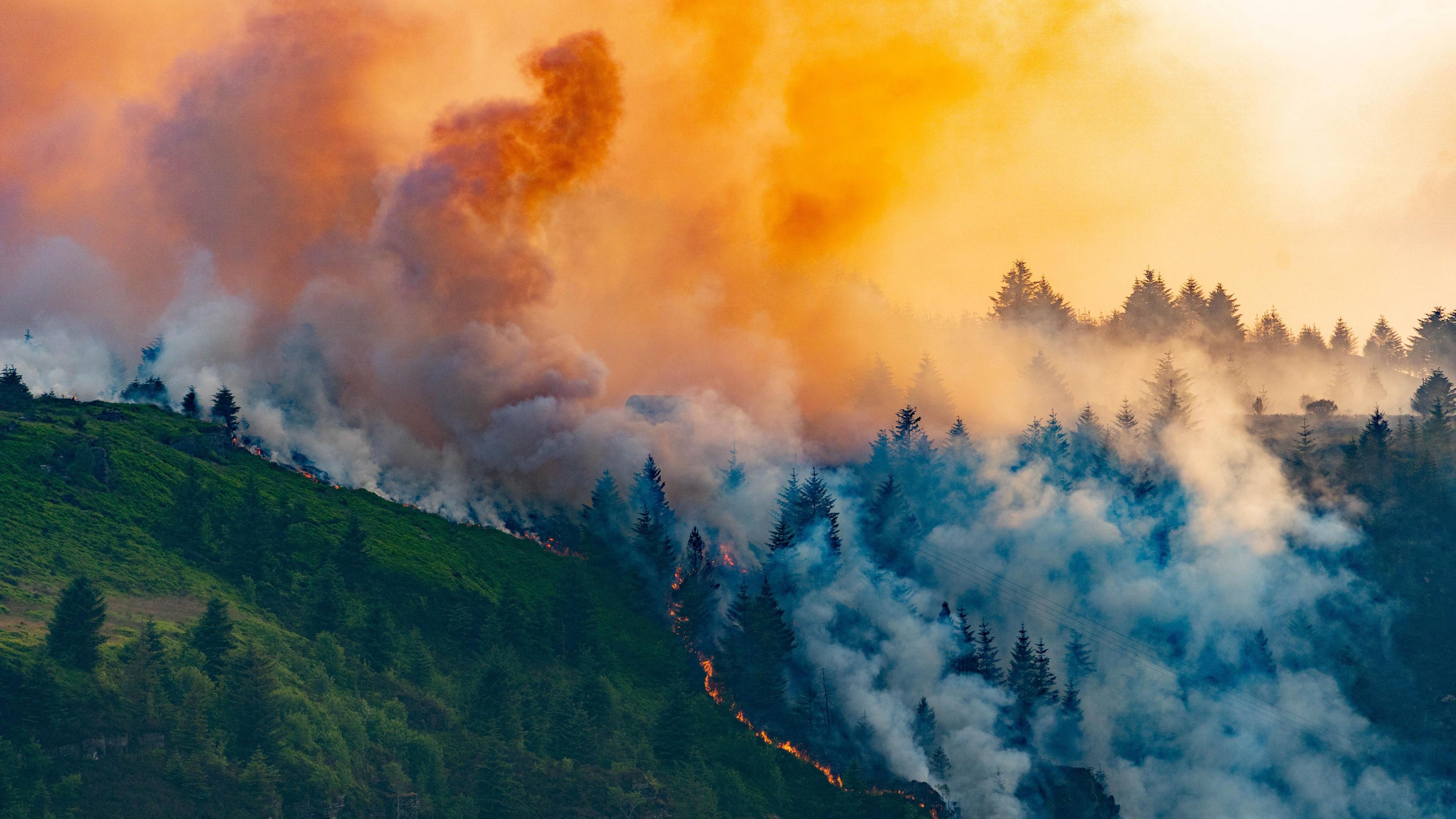
This blaze on the Rhigos Mountain in south Wales in June 2023 destroyed an area the size of 140 football pitches
- Published
Some of the UK's rarest wildlife is being "torched alive" and pushed closer to extinction after weeks of intense grass fires, conservationists have warned.
They include endangered birds like hen harriers and water voles, which are now the UK's fastest declining mammal.
The National Trust said it believed ongoing wildfires at Abergwesyn common in Powys had destroyed "the last remaining" local breeding habitat for golden plovers - considered one of the most beautiful birds of the British uplands.
So far this year 110 sq miles (284 sq km) of land has been burnt by wildfires around the UK - an area larger than Birmingham.
Wildfire home scare has owners fearing about future
- Published12 April
Some wildlife may not return after recurring fires
- Published12 April
Aerial images show land devastated by wildfire
- Published14 April
Figures obtained by the BBC show that in Wales, fire crews have battled almost 1,400 wildfires already this year, leading fire services to urge people to "act responsibly" and report any suspicious behaviour to the police.
The National Trust said 2025 was "turning out to be the worst year ever for these human-caused fires across the country".
"We're extremely worried, this is looking like it's going to be the worst year for seeing our wildlife going up in flames," said Ben McCarthy, the charity's head of nature conservation.
A record dry spell and unusually high temperatures in March are believed to have contributed to the fires. A low number of blazes in 2024 also left more vegetation to fuel them.
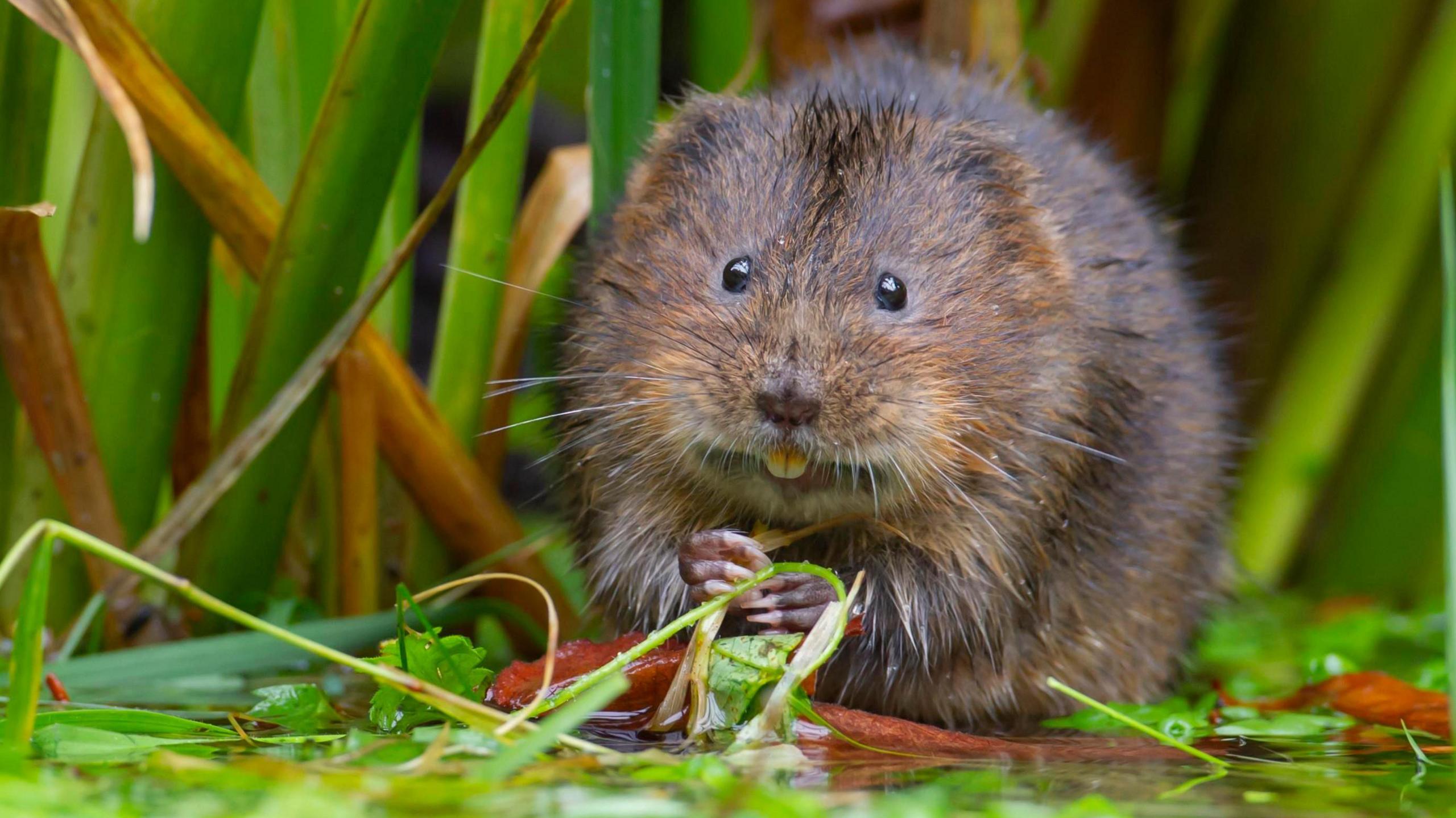
Water voles are already on the UK's Red List for endangered animals due to loss of habitat
Coed Cadw, the Woodland Trust in Wales, said an "irreplaceable" area of temperate Atlantic rainforest had been affected at Allt Boeth near Aberystwyth, with damage to protected bluebells too.
Also known as Celtic rainforest, the habitat harbours scarce plants, lichens and fungi, and is considered more threatened than tropical rainforest.
In England, the National Trust said several thousand newly planted trees at Marsden Moor, in West Yorkshire, had gone up in flames.
While on the Morne Mountains, in Northern Ireland, invertebrates and ground dwelling animals like reptiles were "simply being torched alive".
"That then cascades through the food web because without the invertebrates you don't get the birds who are reliant on them for food," Mr McCarthy said.
He said government funding to help farmers and land managers restore peat bogs in the uplands, to prevent fires while also soaking in planet-warming carbon and providing habitat, was essential.

The hen harrier nests in upland moorlands and is one of the most endangered breeding birds of prey in the UK
Conservation charities including The Wildlife Trusts and the Initiative for Nature Conservation Cymru (INCC) also voiced fears for the future of the water vole, which is already under serious threat from habitat loss and predation by American minks.
Small animals like water voles and shrews, which live in burrows, can survive fast-moving fires but their habitats and the food they rely on are destroyed.
Water voles are "the fastest-declining mammal ever" according to Rob Parry of the INCC.
"Their last foothold [in Wales] is in the uplands so when those sites are burned it is awful for that particular population, but from a UK point of view we are one step closer to the extinction of an entire species," he said.
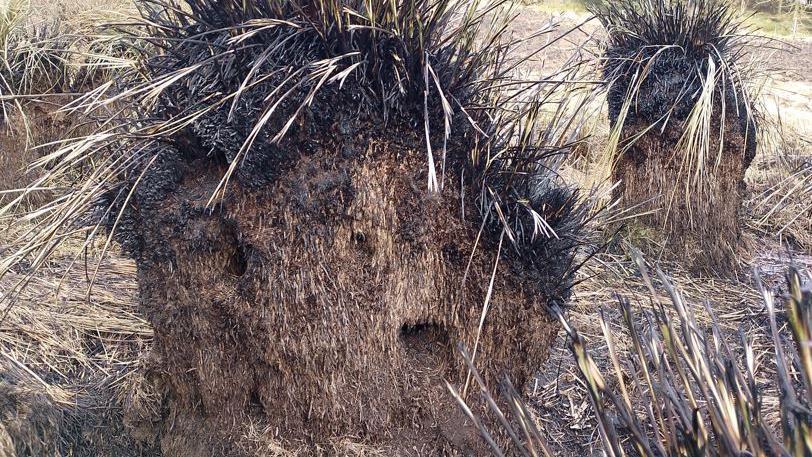
The scorched burrow of a water vole, following grass fires in Ceredigion
The INCC is also monitoring five breeding pairs of barn owls in the Amman Valley in south Wales, where wildfires have destroyed huge areas of habitat.
"A few weeks ago they had all of this area to find food for their chicks and suddenly they don't have that any more," said Mr Parry.
"I don't know how they are going to cope. A wildfire just makes that habitat disappear overnight."
Other rare birds are also affected, including hen harriers, which have been subject to recent conservation efforts to increase their numbers in the Welsh uplands, and skylarks, which have declined in huge numbers since the 1970s.
"We're worried enough as it is about wildlife," said Mr Parry.
"We're one of the most nature-depleted countries in the world and wildfires every spring at the worst possible time is a burden that wildlife and the environment just can't cope with."
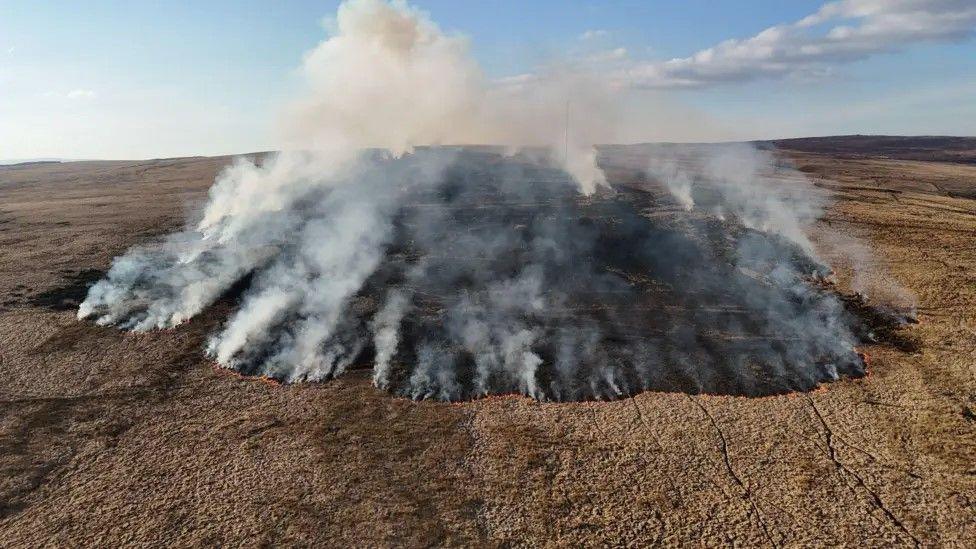
Fire crews have reported more than 1,400 wildfires in Wales so far this year - including this one near in Merthyr Tydfil in March
The INCC has called for closer oversight of controlled burns by farmers and better monitoring of the impact of wildfires on the environment.
Natural Resources Wales (NRW) said wildfires were a "massive issue", particularly in south Wales, where Welsh government figures showed more than half of wildfires in Wales took place last year.
Becky Davies, a senior officer at NRW, said: "In the last three days we've had over 75 fires in the south Wales valleys alone.
"We have a lot of hillsides that are linear, the valley side has a lot of bracken, a lot of heathland, grassland and coal spoil and that is the sort of hillside that goes up in flames."
The environmental impact of wildfires can also be felt more widely.
When it rains after a fire, the newly bare soil and the phosphates that were trapped inside it can wash off into streams and rivers, affecting water quality.
'Deliberate fire setting is a crime'
Numbers of wildfires vary year-on-year depending on when spells of dry weather happen.
But figures obtained by the BBC show that in south Wales, grassfires have increased by 1,200% from the same time period last year.
From 1 January to 10 April 2024, there were 34 wildfires in the region, whereas there were 445 over the same dates in 2025.
In north Wales, crews have attended 170 fires this year, and Mid Wales Fire and Rescue said it had tackled 772 blazes.
Wildfires are also up in England and Northern Ireland compared to last year, while the fire service in Scotland has issued an extreme wildfire alert covering the whole country.
Statistics show the majority of wildfires are started deliberately, but they can also be ignited from disposable BBQs or controlled burns that get out of hand.
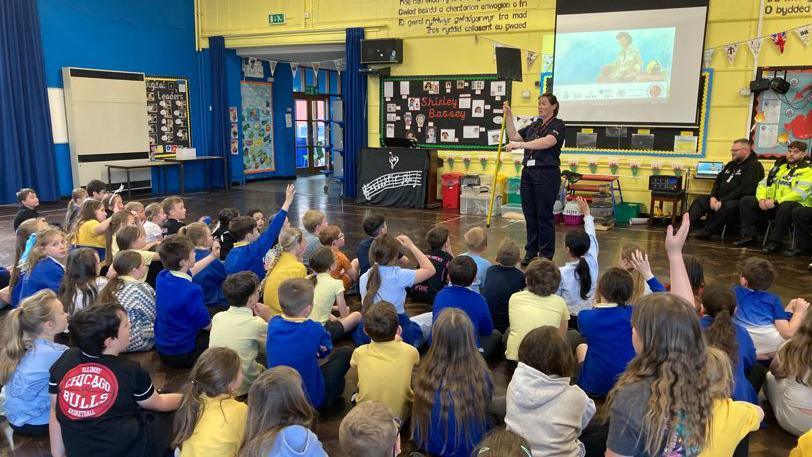
Firefighters and police are teaching children in schools about the damage wildfires can cause to wildlife
In south Wales, firefighters are going to primary schools to teach children from a young age about the devastating impact.
At Pontnewydd Primary School in Cwmbran, staff from South Wales Fire and Rescue Service and Gwent Police brought along animals like snakes, hedgehogs and foxes for children to meet.
Station manager Mark Bowditch said his crews saw the damage to wildlife from wildfires first-hand.
"We see the death of local wildlife, we see the destruction of their habitat," he said.
"We accept that some fires can be accidental, but deliberate fire setting is a crime and that's the message we'd like to get out."
Additional reporting by Dylan Greene.
Huge Welsh wildfires filmed from the air
- Published9 April
Hikers 'devastated' over Mourne Mountains wildfires
- Published9 April
Crews 'on their knees' as fire rages for third day
- Published8 April

Sign up for our Future Earth newsletter to keep up with the latest climate and environment stories with the BBC's Justin Rowlatt. Outside the UK? Sign up to our international newsletter here.